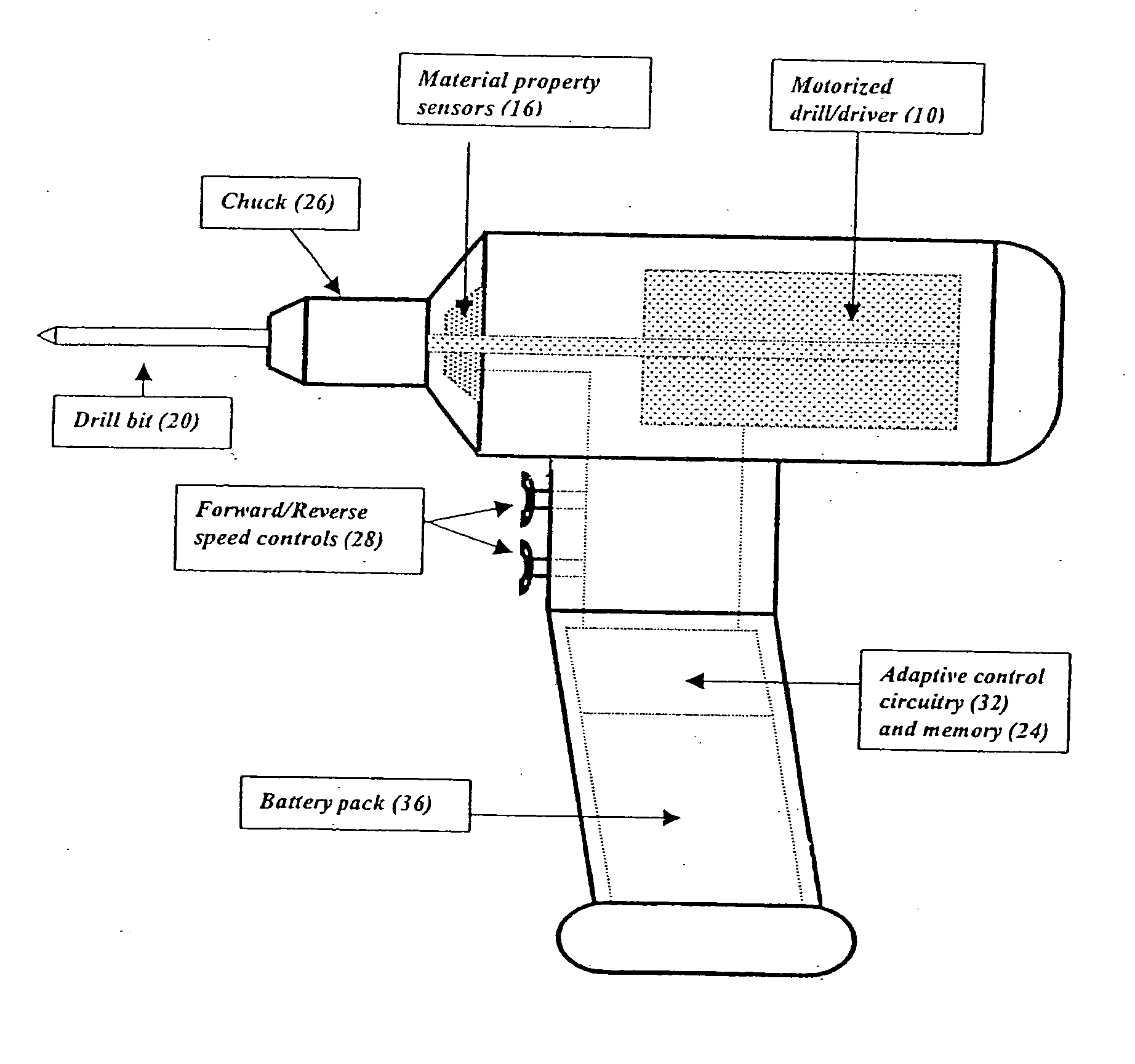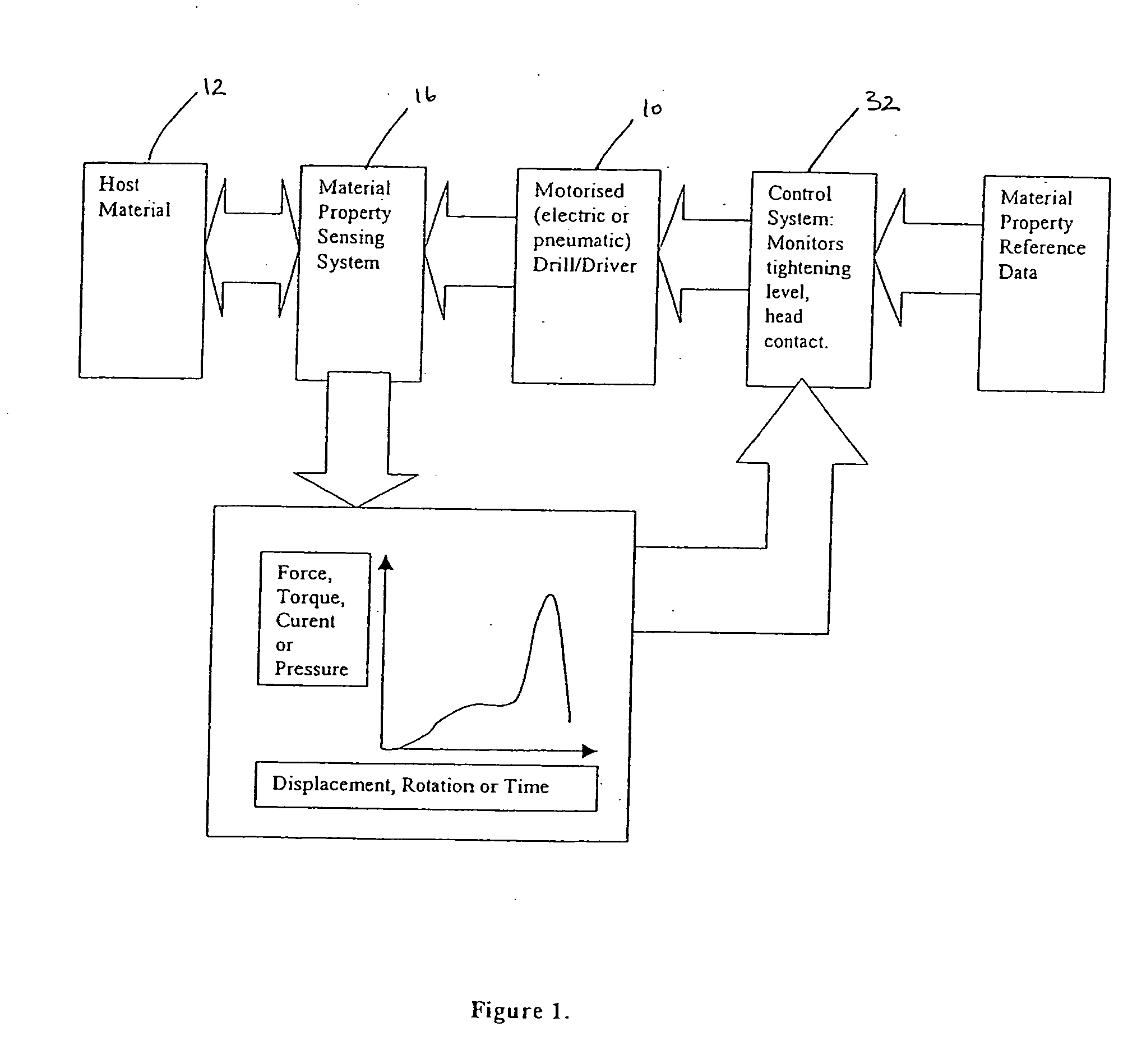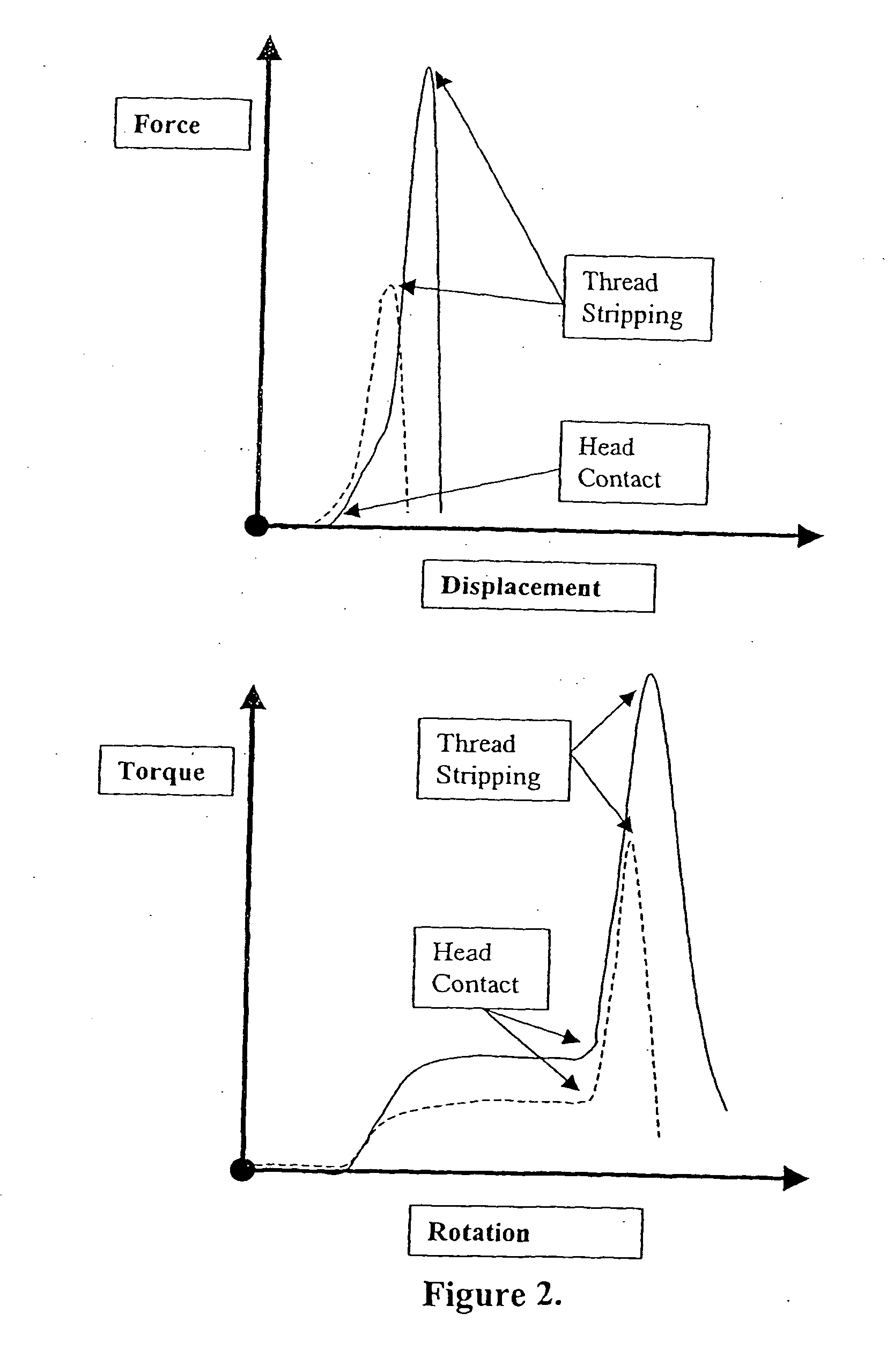Adaptive apparatus for driving a threaded device into material such as a biological tissue
- Summary
- Abstract
- Description
- Claims
- Application Information
AI Technical Summary
Benefits of technology
Problems solved by technology
Method used
Image
Examples
operational examples
[0072] The process of adaptive tightening is illustrated with reference to Examples 1-6 shown in FIGS. 6-17. FIGS. 6, 7, 10, 11, 14 and 15 show signals from a torque transducer in relation to time, as a threaded device is driven into host material, over three different experimental threaded device / host material combinations. FIGS. 8, 9, 12, 13, 16 and 17 illustrate the same experimental combinations using current rather than torque. Six materials have been tested: polyurethane foam of two densities (0.2 and 0.3 gm / cc), cancellous bone (0.9 gm / cc), cortical bone (2 gm / cc), balsawood and meranti. The results from laboratory tests of three of these materials are shown in the Figures: polyurethane foam of two densities (0.2 and 0.3 gm / cc—see FIGS. 6, 7, 8, 9 and 10, 11, 12, 13 respectively, and cancellous bone (0.9 gm / cc)—see FIGS. 14, 15, 16, 17.
Stored Reference Data
[0073]FIGS. 6 and 10 show examples of the known torque reference data stored on the microprocessor 102 for polyurethan...
PUM
 Login to View More
Login to View More Abstract
Description
Claims
Application Information
 Login to View More
Login to View More - R&D
- Intellectual Property
- Life Sciences
- Materials
- Tech Scout
- Unparalleled Data Quality
- Higher Quality Content
- 60% Fewer Hallucinations
Browse by: Latest US Patents, China's latest patents, Technical Efficacy Thesaurus, Application Domain, Technology Topic, Popular Technical Reports.
© 2025 PatSnap. All rights reserved.Legal|Privacy policy|Modern Slavery Act Transparency Statement|Sitemap|About US| Contact US: help@patsnap.com



